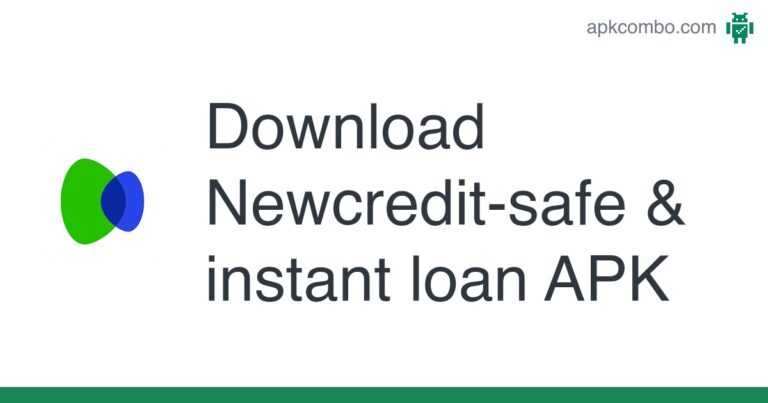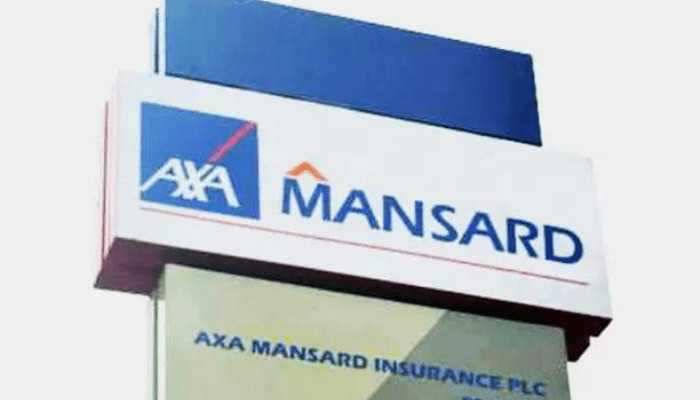What Is A High Ratio Mortgage In Canada?
Are you considering buying a house? What is a high ratio mortgage in Canada? What is a high ratio mortgage, Alberta? What is a fixed closed high ratio mortgage? What is the difference between a conventional mortgage and a high ratio mortgage? What is a fixed rate high ratio mortgage? What is a CMHC high ratio mortgage? Why are high ratio mortgages cheaper? What’s considered a high mortgage?
Whether you’re scouring the Toronto Multiple Listing Service or homes for sale in Calgary or Vancouver, you’ve probably researched a lot of numbers to determine your maximum affordability. Family income, monthly bills, long-term financial goals, and existing debt obligations are all important considerations to consider at this stage.
However, there is another factor that can make a big difference to your purchase budget: the amount of your down payment. How much money do you plan to pay upfront for your new home and how much will you borrow as part of your mortgage?
What is a high ratio mortgage?
High ratio mortgages allow you to buy a home with a down payment of only 5%. A high share mortgage is a mortgage for more than 80% of the value of the home. If you buy a home and make a down payment of less than 20%, your mortgage becomes a high ratio mortgage.
On the other hand, a low-ratio mortgage, also known as a conventional mortgage, is less than 80% of the value of the home. To have a low-ratio mortgage, a down payment of more than 20% is required.
A high ratio mortgage means that you borrow more money than a low-ratio mortgage. This means that high ratio mortgages are riskier for mortgage lenders. To compensate for this, mortgage loan insurance is required for high percentage mortgages from most mortgage lenders, such as banks and credit unions.
History of High-ratio Loans
Until the 1920s, people bought houses not by going to a bank, but by saving their own money until they had enough for at least a plot of land or land with a house. Then came the construction and loan companies, which lent people the money to buy a house and then paid it off in installments over many years. Still, loans were usually for half the value of the home or less.
By the late 1920s, banks were issuing high-yield loans of up to 80% of the home’s value. Private mortgage insurance emerged to protect the banks, but all that was forgotten in the 1930s when the unemployed stopped paying and so did the banks and PMI companies.
Congress approved Home Owners’ Loan Corp. well, which started with insuring mortgages and cutting rates to 15%. Later, through the Federal Housing Administration (FHA) and other agencies, prepayments dropped to the low single digits and even 0% to encourage homeownership.
This system flourished until about 2007-2008 when the 2008 mortgage crisis broke out. The surge in subprime mortgage defaults after 2007 contributed to the worst recession in decades. The housing boom of the mid-2000s — coupled with the low-ratio rates of the time — prompted many lenders to offer home loans to those with poor credit. After the housing bubble burst, many borrowers were unable to pay their subprime mortgages.
High Ratio Creditors
The Federal Housing Administration offers programs that allow borrowers to obtain FHA loans with an LTV rating of up to 96.5%. In other words, the program asks for an advance of 3.5%. However, the program requires a minimum credit score to be approved for a high-ratio loan. There are other offers where a lower credit score is allowed with a 10% down payment.
In addition, FHA loans require a mortgage insurance premium (MIP). However, you can refinance when the LTV drops below 80% and the loan is no longer considered a high-ratio loan, negating insurance.
Example of a high-ratio loan
Suppose a borrower plans to buy a house with an estimated value of $100,000. The borrower can only give an advance of $10,000 and the remaining $90,000 must be borrowed. After approaching several lenders, they eventually agree to take out a mortgage, but at an above-average interest rate.
The result is a loan-to-value ratio of 90% or (90,000/100,000), which would be considered a high-ratio loan.
What Is A High Ratio Vs Low Ratio?
In Canada, buyers must pay a minimum of 5% for a home priced at $500,000 or less, increasing to 10% for any portion of the home’s price over $500,000 and up to $1 million. A reduction of at least 20% is required for homes above the million.
Any home purchase that pays less than 20% will require a “high share” mortgage. This refers to the borrower with a high loan value (LTV), of which 80 to 95% is burdened with mortgages and only 5 to 20% of the equity paid on the property. Buying a house with more than a 20% down payment is called a “low rate”.
What Is Mortgage Default Insurance?
From a lender’s perspective, a high ratio mortgage is considered a higher risk, as homeowners who buy above their budget and hold less capital are more likely to default on their loan. For this reason, standard mortgage insurance is necessary for high ratio mortgages. This insurance coverage protects the financial interest of the lender if the borrower is no longer able to make their mortgage payments.
Mortgage standard insurance is offered by one of three institutions: The Canada Mortgage and Housing Corporation (CMHC) and two private insurers: Genworth and Canada Guaranty. Since CMHC is the largest provider and a taxpayer-backed Crown company, mortgage default insurance is also often simply referred to as CMHC insurance. Your insurance application is submitted during the mortgage qualification process and is one of the conditions that must be met before the lender provides you with a home loan.
Typically, the premiums for mortgage insurance are paid by the borrower. Premiums are usually built into the mortgage amount and spread over the repayment, meaning a portion of your total monthly payments goes toward your coverage.
Insurance premiums increase based on the borrower’s LTV size and are set by the CMHC. Current awards can be found here. These awards may change over time.
In general, the higher your down payment, the less you’ll have to pay in insurance premiums, lowering your overall mortgage costs and saving you money over time.
How much do you pay for a high ratio mortgage?
As an example, according to the CMHC premium calculator, a buyer who buys a home for $500,000 and puts down $25,000 (5%), depreciated over 25 years, would have to pay another 4% or $19,000 in insurance premiums over the life of the mortgage.
Increasing that down payment to $50,000 (10%) would reduce premiums to 3.10% of total mortgage costs, totalling $13,950 on the entire mortgage — a difference of $5,050. Of course, if you make a total down payment of 20% ($100,000), these additional costs will be removed from the monthly payments.
High Index Mortgage Calculation
You can use a mortgage payment calculator to calculate whether you pay more or less with a high or low mortgage interest deduction.
For example, let’s consider a house with a purchase price of $500,000. Based on February 2021 rates, the lowest rate for a 5-year insured mortgage was 1.28%. The lowest rate for a conventional 5-year mortgage was 1.49%.
High Index Mortgages
With a 5% down payment, your mortgage loan value would be $475,000, making it a high ratio mortgage. The CMHC insurance premium on the mortgage would be $19,000 which is added to the mortgage principal balance.
Using the lower rate of 1.28%, with a 25-year amortization period, your monthly payment would be $1,924. The total interest cost for the life of your high ratio mortgage is $83,277. Compared to the principal, the lifetime interest you pay will represent 17.53% of your mortgage principal.
Conventional Mortgages
Let’s consider the same scenario as above, but now you make a 20% down payment on a $500,000 house.
If you use the lowest rate on a conventional mortgage is 1.49%, your monthly payment would be $1,597, with no need for CMHC insurance premiums. The total interest expense is $79,101, or 19.77% of the mortgage principal balance.
Why Are High ratio mortgages Cheaper?
Is a high ratio mortgage cheaper than a low-ratio mortgage?
The total interest paid over the life of the mortgages is about the same, which is $83,277 for a high ratio mortgage and $79,101 for a low-ratio mortgage. What sets them apart is the interest as a percentage of the original principal of the mortgage. Conventional mortgage results in more interest paid compared to the principal, while a high ratio mortgage has less interest paid. This is due to the lower interest rates found on high ratio mortgages.
The above examples assume that the interest rate remains the same for the entire 25-year term of the mortgage. Mortgage rates change and CMHC requirements and grants can change as well. The conventional mortgage also required a $50,000 more down payment than the high ratio mortgage, for a total interest savings of only $4,176 over 25 years.
Interest Costs – What Is A High Ratio Vs Low Ratio
| High-Ratio (5%) | High-Ratio (10%) | High-Ratio (15%) | Low-Ratio (20%) | |
| 5-Year Fixed Interest Rate | 1.28% | 1.28% | 1.28% | 1.49% |
| Down Payment | $25,000 | $50,000 | $75,000 | $100,000 |
| Mortgage Principal | $475,000 | $450,000 | $425,000 | $400,000 |
| CMHC Premium | $19,000 | $13,950 | $11,900 | $0 |
| Monthly Payment | $1,972 | $1,852 | $1,744 | $1,597 |
| Total Interest Costs | $83,277 | $78,211 | $73,651 | $79,101 |
| Interest (% of Principal) | 17.53% | 17.38% | 17.33% | 19.77% |
| Total Cost (Principal, Interest, and Down Payment) | $583,277 | $578,211 | $573,651 | $579,101 |
Higher Deposit Required
In the example above, the highest down payment was required for the low-ratio mortgage. If you can make a large down payment, what if you choose to take out a high mortgage and use the saved down to invest? The low-ratio mortgage had a down payment of $100,000. If you took out a high ratio mortgage with a $25,000 down payment, you would have $75,000 left.
If you invested monthly at 2% interest, you would make $48,602 on a $75,000 investment. However, this scenario works because current mortgage rates are historically low. If the mortgage interest rate is higher than what you would earn saving it, a low-ratio mortgage would have a lower total cost.
High Ratio Vs Conventional Mortgage
Mortgage insurance is required for high ratio mortgages, but not for conventional mortgages. Mortgage insurance is provided by Canada Mortgage Housing Corporation (CMHC) and other private insurers. The CMHC mortgage insurance is not free. You must pay the CMHC mortgage insurance premiums based on your mortgage loan-to-value ratio.
High-Ratio and Conventional Mortgage Comparison
| High ratio mortgage | Conventional Mortgage | |
| CMHC Insurance | Required | Not Required |
| Maximum Amortization Period | 25 Years | 35 Years |
| Mortgage Rates | Lower | Higher |
| Maximum Home Price | $1,000,000 | No Limit |
Insurance premiums
You have to pay for CMHC insurance for high ratio mortgages. This is done in the form of an insurance premium that is charged as a percentage of the loan amount.
CMHC insurance is only available on properties with a purchase price or value of less than US$1,000,000. This means that you cannot use a high ratio mortgage if you intend to buy a home that is priced over $1,000,000. Instead, to buy a home that costs more than $1 million, you must make a down payment of 20% or more on a conventional mortgage.
Amortization Period:
The maximum amortization period for high ratio mortgages is 25 years. If you want a longer repayment period, you should use a conventional mortgage. A longer repayment term allows you to spread your mortgage payments over a longer period, resulting in lower monthly mortgage payments. Although the number of payments on your mortgage is less, you will need to pay a larger down payment to qualify for a conventional mortgage. A longer repayment term also means that you pay more interest over the term of your loan.
Mortgage rates
High ratio mortgages are insured mortgages. Insured mortgages generally have a lower mortgage interest rate than conventional uninsured mortgages. While you can get a lower mortgage rate with a high ratio mortgage, you still have to pay for standard mortgage insurance. However, in some cases, your mortgage interest deduction may exceed the cost of mortgage insurance.
CMHC High Index Mortgage
CMHC insurance premiums are paid by you, not the mortgage lender. You can add or prepay CMHC premiums to your mortgage amount.
CMHC premiums are calculated as a percentage of your total mortgage amount. The premium varies depending on the LTV ratio of your mortgage, with higher LTV ratios the premium increases. You can use a CMHC insurance premium calculator to estimate the premium to be paid on your mortgage.
What does a high LTV loan say to you?
Lenders and financial providers use the LTV ratio to measure the level of risk associated with taking out a mortgage loan. If a borrower cannot make a significant down payment and as a result, the loan amount approaches the appraised value of the property, it is considered a high percentage loan. In other words, as the loan amount approaches 100% of the property’s value, lenders may find the loan too risky and reject the application.
The lender runs the risk of the borrower defaulting, especially if the LTV is too high. The bank may not be able to sell the property to cover the loan amount to the defaulting borrower. Such a scenario can easily arise in an economic downturn when homes tend to fall in value. If the loan to the borrower exceeds the value of the property, the loan is called underwater. If the borrower defaults on the mortgage, the bank will lose money when it sells the property for less than the outstanding mortgage balance. Banks monitor LTV to avoid such a loss.
As a result, most high ratio mortgages require some form of insurance coverage to protect the lender. The insurance is called private mortgage insurance (PMI), which the borrower would have to purchase separately to protect the lender.







